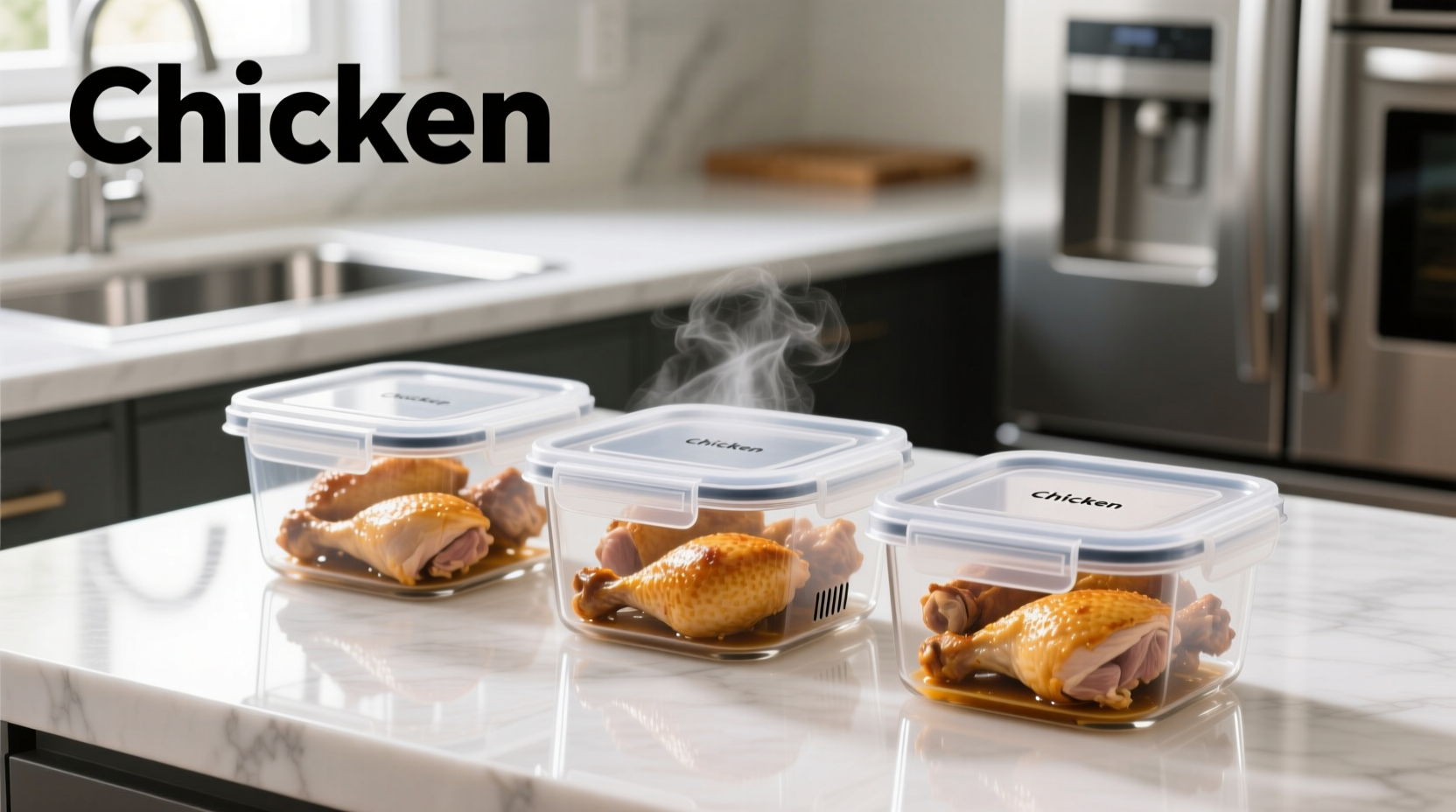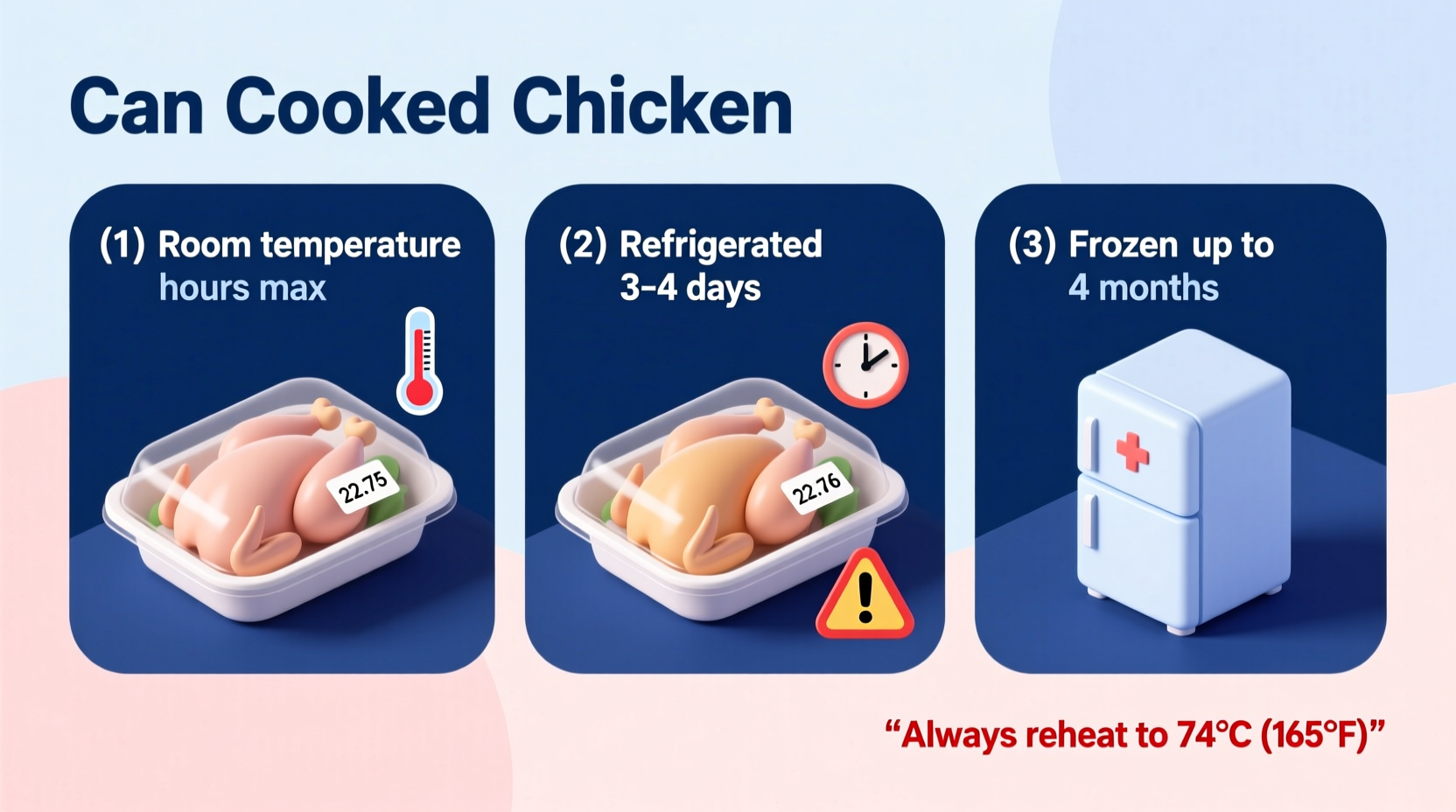Your Complete Guide to Cooked Chicken Storage Safety
When you've prepared a delicious roast chicken or grilled chicken breasts, knowing exactly how long it remains safe to eat is crucial for preventing foodborne illness. This guide provides science-backed storage guidelines you can trust, with clear timelines and practical tips you can implement immediately.
Understanding the Food Safety Timeline
Food safety isn't arbitrary—it follows a predictable biological timeline. When cooked chicken enters the "danger zone" (40°F-140°F or 4°C-60°C), bacteria begin multiplying rapidly. The USDA's Food Safety and Inspection Service has established clear guidelines based on extensive research into bacterial growth patterns:
| Storage Method | Safe Duration | Temperature Requirement | Quality Considerations |
|---|---|---|---|
| Refrigerator | 3-4 days | 40°F (4°C) or below | Best quality within first 2 days |
| Freezer | 2-6 months | 0°F (-18°C) or below | Texture may degrade after 4 months |
| Room Temperature | 2 hours max | Above 40°F (4°C) | Discard after 2 hours (1 hour if above 90°F/32°C) |
This evidence-based timeline comes directly from the USDA Food Safety and Inspection Service, which continuously monitors foodborne illness data to establish these critical safety parameters.
Storage Conditions That Change the Clock
Not all cooked chicken storage scenarios are equal. Several contextual factors can shorten or extend safe consumption windows:
- Initial cooking temperature: Chicken cooked to 165°F (74°C) has fewer surviving bacteria, potentially extending safety margin slightly
- Cooling speed: Chicken cooled from cooking temperature to 40°F within 2 hours maintains maximum safety window
- Storage container: Airtight containers prevent cross-contamination and moisture loss
- Handling practices: Using clean utensils when serving prevents introducing new bacteria
According to research published in the Journal of Food Protection, improper cooling practices account for 37% of foodborne illness cases related to cooked poultry. Always divide large portions into shallow containers to accelerate cooling.
Step-by-Step: Maximizing Cooked Chicken Safety
Immediate Post-Cooking Protocol
What you do in the first 90 minutes after cooking determines your entire storage window. Follow this professional kitchen protocol:
- Remove chicken from heat source immediately when internal temperature reaches 165°F
- Place in shallow containers (no deeper than 2 inches) to facilitate rapid cooling
- Cover loosely with lid or wrap to prevent contamination while allowing heat to escape
- Refrigerate within 2 hours (1 hour if ambient temperature exceeds 90°F)
Refrigeration Best Practices
Where you store cooked chicken in your refrigerator matters as much as when you store it:
- Store on middle shelf where temperature is most consistent
- Keep in airtight containers or sealed plastic bags
- Place on a plate to catch potential drips and prevent cross-contamination
- Never store above raw meats in the refrigerator
Freezing for Long-Term Storage
For extended storage beyond 4 days, freezing is your best option. Follow these steps for optimal results:
- Cool completely in refrigerator before freezing
- Wrap tightly in heavy-duty aluminum foil or freezer paper
- Place wrapped portions in airtight freezer bags, removing as much air as possible
- Label with contents and date using freezer-safe marker
- Store at 0°F (-18°C) or below for best quality

Recognizing Spoilage: When to Discard
Even within recommended timeframes, spoilage can occur. Trust these sensory indicators over calendar dates:
- Smell test: Sour, ammonia-like, or sulfuric odors indicate spoilage
- Texture check: Slimy or sticky surface (even after washing) means discard
- Visual inspection: Grayish color, mold spots, or unusual discoloration
- Taste test: Never recommended—rely on smell and appearance first
The CDC reports that 1 in 6 Americans experiences foodborne illness annually, with poultry being a common source. When in doubt, throw it out—no meal is worth risking salmonellosis or campylobacteriosis.
Safe Reheating Guidelines
Proper reheating is your final safety checkpoint. Follow these protocols:
- Refrigerated chicken: Heat to 165°F throughout before consuming
- Use shallow containers for even reheating
- Stir frequently when reheating in microwave
- Consume immediately after reheating—don't re-refrigerate
- Never reheat chicken more than once
According to the FDA Food Code, properly reheated food must reach 165°F within 2 hours to minimize time in the danger zone. Use a food thermometer to verify internal temperature at multiple points.
Special Considerations for Different Chicken Preparations
Cooked chicken doesn't exist in a vacuum—sauces, marinades, and preparation methods affect shelf life:
- Breaded chicken: Shorter shelf life (2-3 days) due to moisture absorption by breading
- Chicken in sauce: 3-4 days if sauce is acidic (tomato-based), 2-3 days for cream-based sauces
- Grilled chicken: Longer shelf life (up to 4 days) due to reduced moisture content
- Rotisserie chicken: 3-4 days, but remove from store packaging immediately
Food safety researcher Dr. Mindy Brashears notes that acidic marinades can extend safe storage by up to 24 hours by creating an environment less hospitable to bacterial growth, but this shouldn't replace standard refrigeration practices.











 浙公网安备
33010002000092号
浙公网安备
33010002000092号 浙B2-20120091-4
浙B2-20120091-4